At Fort Christiansborg, now called Osu Castle, in Accra, Ghana, slaves were kept in airless, stinking cellars below those used to store alcohol. The governor of the Gold Coast lived above, attending church and supervising proceedings in tiled rooms with breezy views over the Gulf of Guinea and miles of golden beach. Our guide leads us from the castle’s dungeons, down a long, damp passage and through the ‘Door of No Return’; blinded by the light, we blink out on to the sand, the last bit of Africa over which slaves would have walked before being ferried to transport ships. On board they were kept in even worse conditions than at the forts. Fifteen per cent would not survive the transatlantic crossing.
There were more than 50 slave forts along the coast of Ghana – built by the Portuguese, Dutch and British – through which many of the almost 13 million enslaved Africans passed as they were sold, branded and shipped to the New World. 2019 was declared ‘The Year of Return’ by Ghana’s president Nana Akufo-Addo, marking 400 years since the first English slave ship arrived in Jamestown, Virginia. Members of the African diaspora are encouraged to come to Ghana to discover their roots and to visit these charged sites. The dank, dark dungeons, where thousands of slaves were chained, stripped of all dignity, are decorated with wreaths left by their descendants.
The artist duo Langlands & Bell have spent the last 18 months documenting these slave forts, assembling ground plans of the strategic architecture, fortified structures that represent ruthless power. These plans resemble the Adinkra symbols used in Asante textiles and architecture, and have been rendered in the style of Asafo (war-company) flags, appliqué works that echoed and subverted the standards seen on British ships. They are shown alongside plans of London institutions, such as the British Museum and Tate, which were to a large extent founded on the profits of slavery. Visitors will pass through a replica ‘Door of No Return’ into a room featuring a video projection of the seascape as seen from the beach at Elmina Castle near Cape Coast.
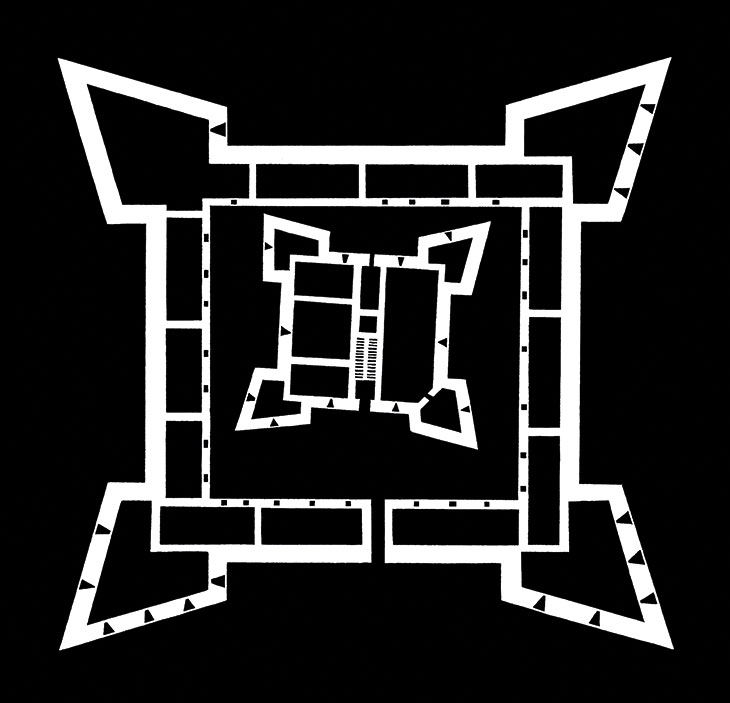
English Fort Komenda, 1695 (2019), Langlands & Bell. Courtesy the artists and Gallery 1957
‘Langlands & Bell: The Past is Never Dead…’ will open in the spring at Gallery 1957 in the Kempinski Hotel. When I visit, Tony Blair sweeps past me, guided into a waiting Jaguar by his security detail. He has been chairing a presidential summit of African leaders and the lobby is full of robed dignitaries carrying golden staffs and other markers of authority. In 1957, the year from which the gallery takes its name, Ghana became the first sub-Saharan country to win independence. In 1948, at Osu Castle, a British soldier fired into a crowd of unarmed African war veterans who were attempting to deliver a petition, killing several men, which sparked five days of rioting. Kwame Nkrumah was taken to Kumasi and imprisoned. After Britain handed over power, he chose to make Osu Castle his presidential residence. (Plans are now afoot to convert it into a ‘museum of leadership and governance’.)
To celebrate Ghana’s independence, Nkrumah commissioned a national museum, designed by Maxwell Fry, Jane Drew, Lindsay Drake and Denys Lasdun. Fry, once in partnership with Walter Gropius, had been stationed in Accra during the war, where he was in charge of maintaining the city’s forts. Later, he and Jane Drew were tasked with creating a new masterplan for Accra, where they built numerous public buildings, adapting the International Style to the humid climate of West Africa. The museum, with its aluminium Dome of Discovery-style roof, was an essay in the tropical modernism they pioneered and Nkrumah favoured. The shiny dome is now covered in asphalt and an empty shell, the interior having been gutted and stripped of its asbestos panels.
The art scene in Ghana, as Odile Tevie, director of the Nubuke Foundation, tells me, is dynamic but ‘fledgling’. The foundation is completing a small but striking new building near the University of Ghana; a brutalist, concrete cantilever by Austrian architects Baerbel Mueller and Juergen Strohmayer that will open on 23 November with an exhibition by the photographer James Barnor, who used to have a makeshift studio, Ever Young, in the shadow of Fort James. He documented Nkrumah’s rise to power, and Ghana’s growing confidence, before emigrating to London in 1959. Other institutions enthusiastically researching and promoting Ghanaian artists include ANO, the initiative of Nana Oforiatta Ayim, the curator of the first Ghanaian pavilion at the Venice Biennale this year.
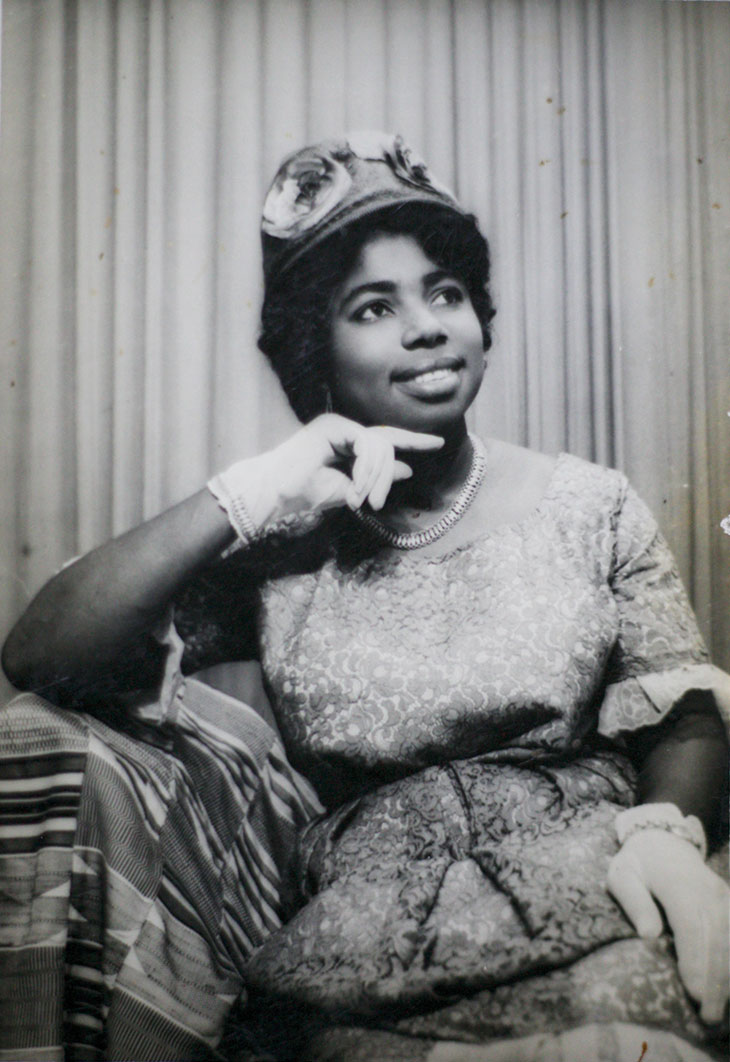
Self Portrait IV (n.d.), Felicia Abban. Photo: courtesy Venice Biennale 2019: Ghana Pavilion
Taking its title from the song ‘Ghana Freedom’, written to celebrate independence, the pavilion presented work by another lesser-known studio photographer, Felicia Abban, alongside established names such as John Akomfrah, Ibrahim Mahama, Selasi Awusi Sosu and El Anatsui. The structure, inspired by traditional earth houses, was designed by British-Ghanaian architect David Adjaye who is building several large-scale projects in Accra, including a new cathedral and a $1.2 bn redevelopment of the waterfront, which the current president sees as the realisation of Nkrumah’s 1963 vision for the area, once a colonial recreation ground.
Nkrumah built numerous heroic monuments in Accra, using art and architecture to furnish a symbolic nationalism, including Black Star Square, which frames the ocean with a gigantic triumphal arch that gestured towards Nkrumah’s pan-African dream of a united continent. He is buried nearby, in a mausoleum next to a crumbling community centre by Fry and Drew, with a large mural over the entrance by Kofi Antubam, Nkrumah’s official state artist. A statue of Nkrumah, decapitated in the military coup in which he was overthrown in 1966, stands sentry behind it, his head on a plinth alongside.
From the November 2019 issue of Apollo. Preview and subscribe here.
Unlimited access from just $16 every 3 months
Subscribe to get unlimited and exclusive access to the top art stories, interviews and exhibition reviews.


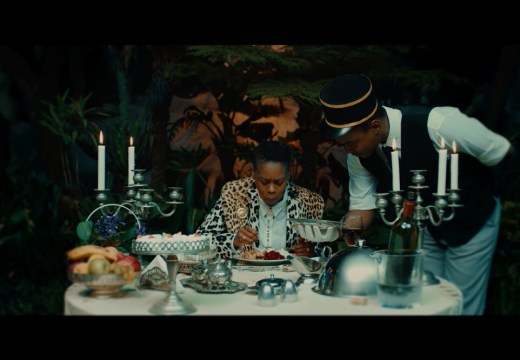
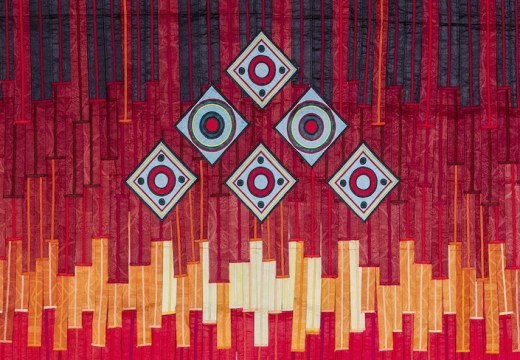
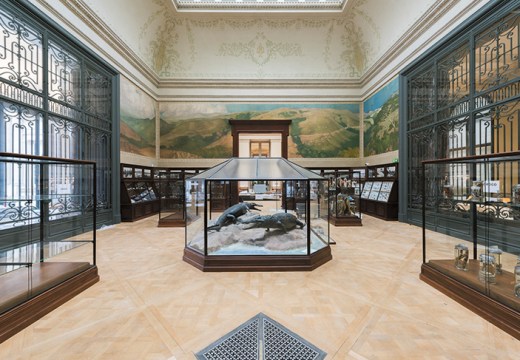









![Masterpiece [Re]discovery 2022. Photo: Ben Fisher Photography, courtesy of Masterpiece London](http://www.apollo-magazine.com/wp-content/uploads/2022/07/MPL2022_4263.jpg)
It’s time for the government of London to return to its rightful home